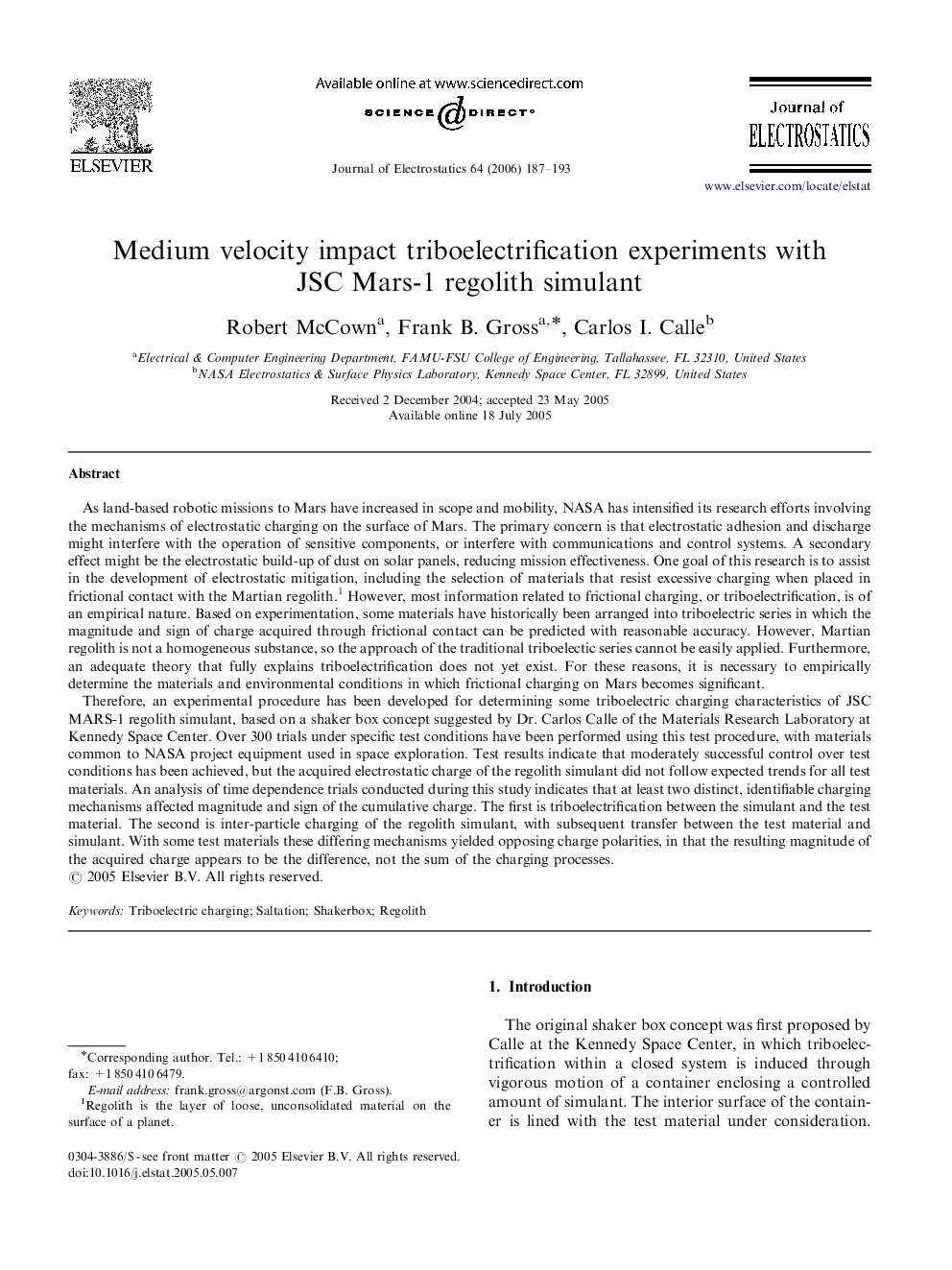| کد مقاله | کد نشریه | سال انتشار | مقاله انگلیسی | نسخه تمام متن |
|---|---|---|---|---|
| 726139 | 1461339 | 2006 | 7 صفحه PDF | دانلود رایگان |

As land-based robotic missions to Mars have increased in scope and mobility, NASA has intensified its research efforts involving the mechanisms of electrostatic charging on the surface of Mars. The primary concern is that electrostatic adhesion and discharge might interfere with the operation of sensitive components, or interfere with communications and control systems. A secondary effect might be the electrostatic build-up of dust on solar panels, reducing mission effectiveness. One goal of this research is to assist in the development of electrostatic mitigation, including the selection of materials that resist excessive charging when placed in frictional contact with the Martian regolith.1 However, most information related to frictional charging, or triboelectrification, is of an empirical nature. Based on experimentation, some materials have historically been arranged into triboelectric series in which the magnitude and sign of charge acquired through frictional contact can be predicted with reasonable accuracy. However, Martian regolith is not a homogeneous substance, so the approach of the traditional triboelectic series cannot be easily applied. Furthermore, an adequate theory that fully explains triboelectrification does not yet exist. For these reasons, it is necessary to empirically determine the materials and environmental conditions in which frictional charging on Mars becomes significant.Therefore, an experimental procedure has been developed for determining some triboelectric charging characteristics of JSC MARS-1 regolith simulant, based on a shaker box concept suggested by Dr. Carlos Calle of the Materials Research Laboratory at Kennedy Space Center. Over 300 trials under specific test conditions have been performed using this test procedure, with materials common to NASA project equipment used in space exploration. Test results indicate that moderately successful control over test conditions has been achieved, but the acquired electrostatic charge of the regolith simulant did not follow expected trends for all test materials. An analysis of time dependence trials conducted during this study indicates that at least two distinct, identifiable charging mechanisms affected magnitude and sign of the cumulative charge. The first is triboelectrification between the simulant and the test material. The second is inter-particle charging of the regolith simulant, with subsequent transfer between the test material and simulant. With some test materials these differing mechanisms yielded opposing charge polarities, in that the resulting magnitude of the acquired charge appears to be the difference, not the sum of the charging processes.
Journal: Journal of Electrostatics - Volume 64, Issues 3–4, March 2006, Pages 187–193